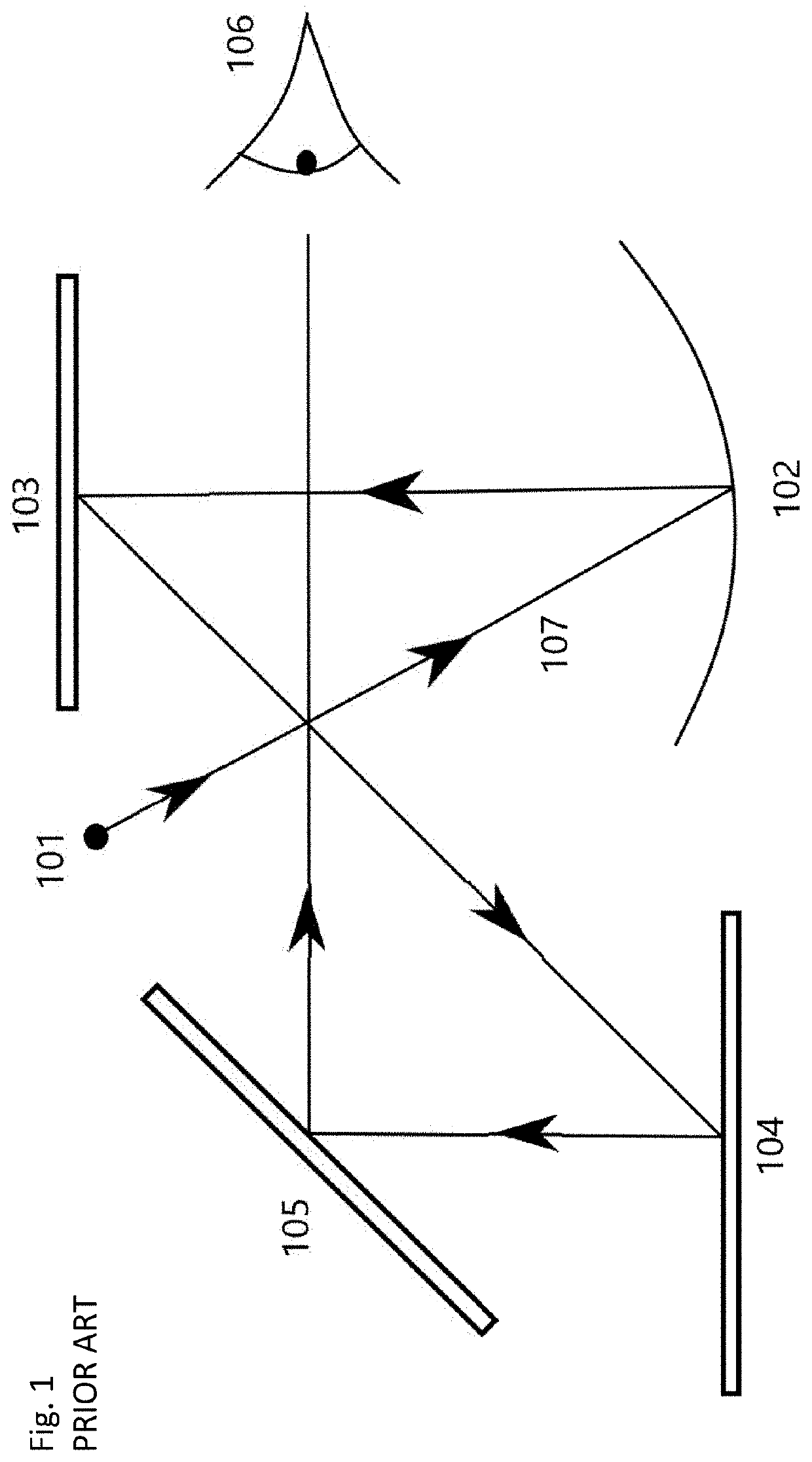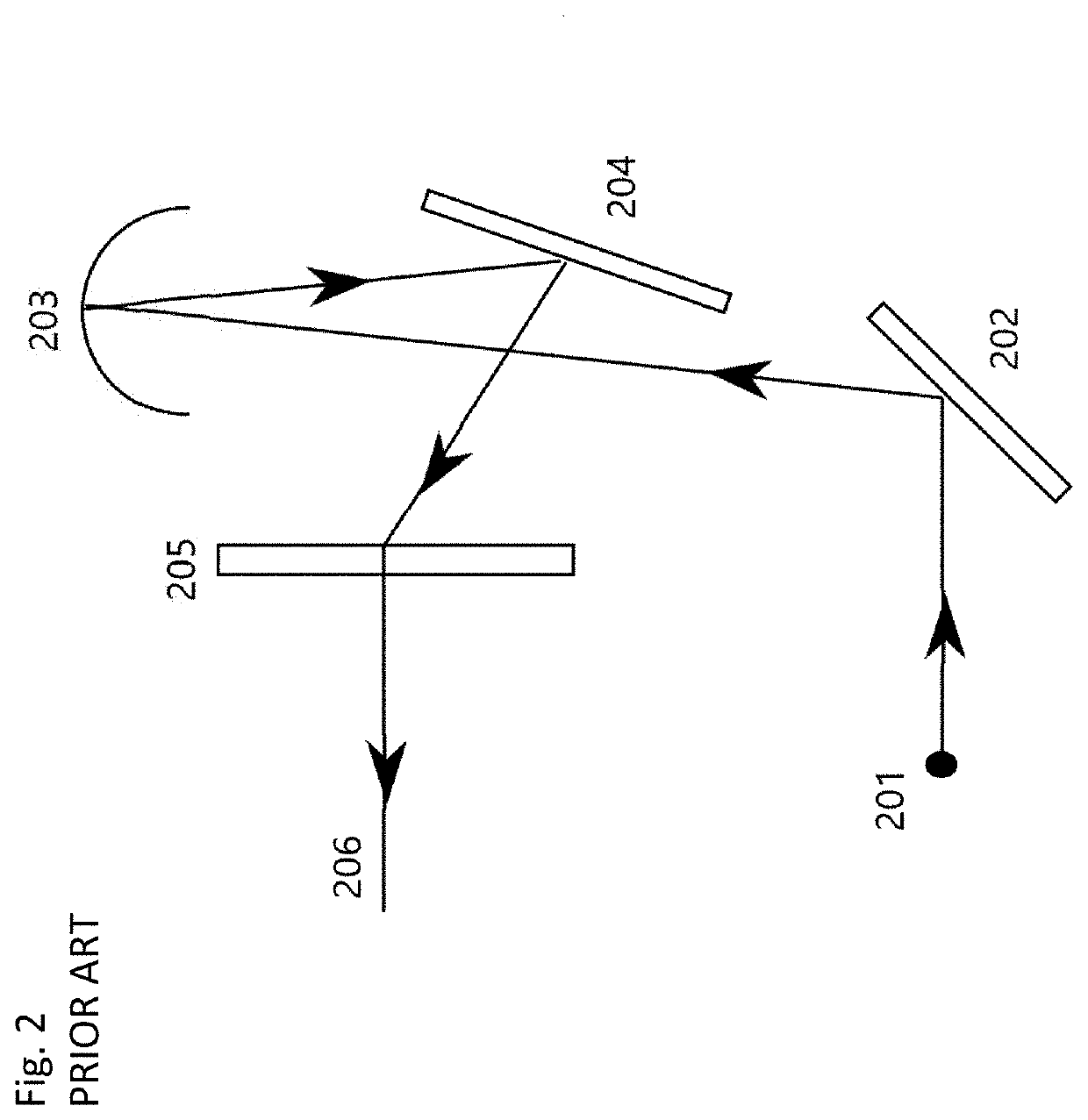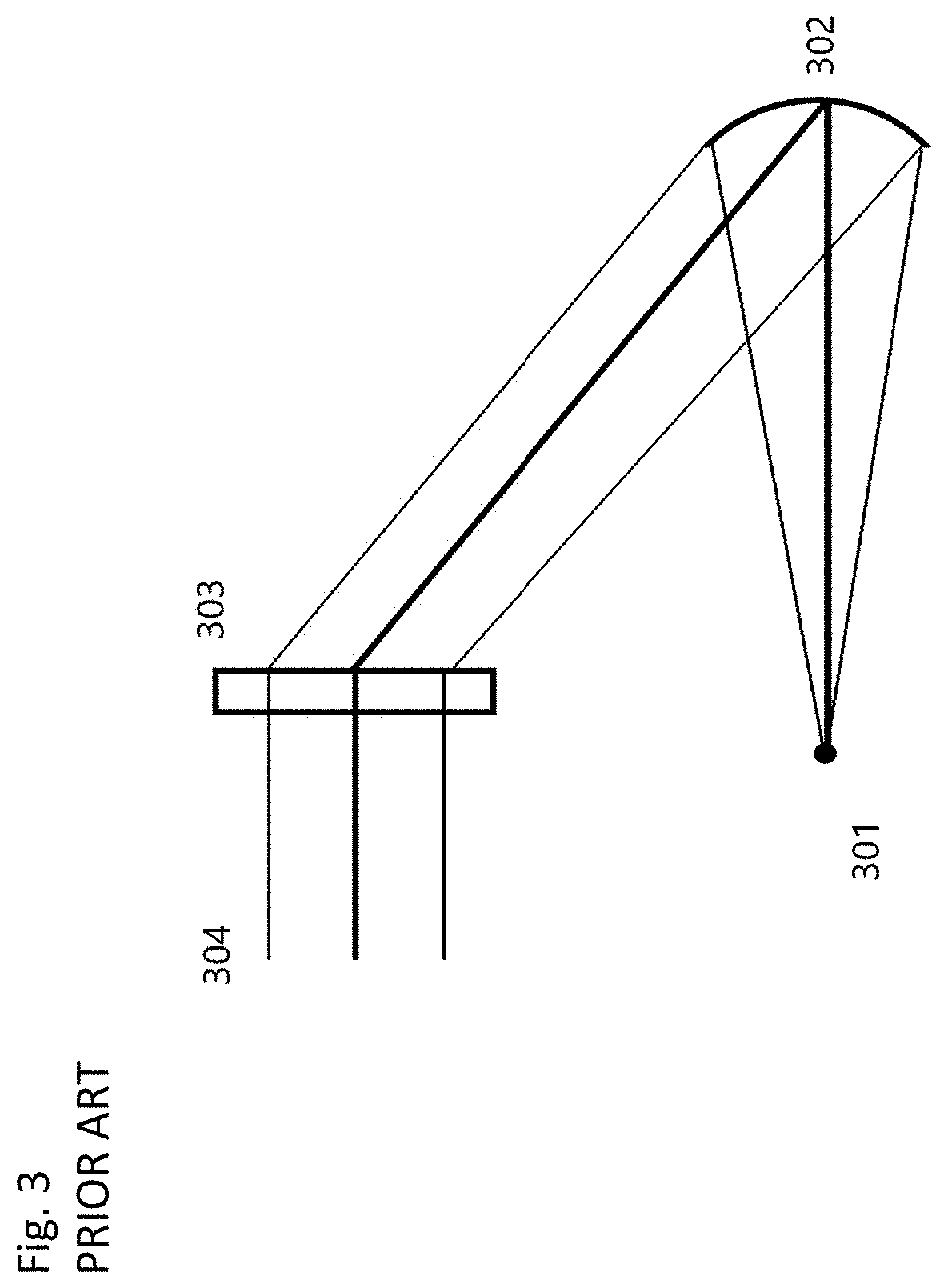Holographic optical system
a technology of optical system and holographic lens, which is applied in the field of holographic optical system, can solve the problems of chromatic dispersion, affecting the angular position of the reticle, and becoming more difficult to correct the aberration inherent in off-axis design,
- Summary
- Abstract
- Description
- Claims
- Application Information
AI Technical Summary
Benefits of technology
Problems solved by technology
Method used
Image
Examples
first embodiment
[0032]Referring first to FIG. 4, there is depicted a schematic diagram of an optical system for providing a red dot virtual image to a user in accordance with the disclosure. This is a nominal design, which has also been modelled in ray tracing software (as discussed with reference to FIG. 6 below) and fabricated experimentally. This comprises: a light source 401; a spherical mirror 403; a first holographic optical element (HOE) 404; a second HOE 405; and a beamsplitter 406. Reticle light is provided to a user eye 407. An axis of light 408 entering the user eye 407, comprising the reticle light and light passing through the beamsplitter 406 from outside the optical system is shown (such that the axis 408 is in line with the eye 407 of the user).
[0033]Light source 401 is a point source of light, for instance, a laser diode, VCSEL (Vertical Cavity Surface Emitting Laser) or a LED with a masking pinhole (not shown, typically of diameter approximately 50 μm). Emitted light chief (or cen...
second embodiment
[0073]Reference is now made to FIG. 5, in which there is depicted a schematic diagram of an optical system for providing a red dot virtual image to a user in accordance with the disclosure. This comprises: a light source 501; a spherical mirror 502; a waveguide 504; a holographic optical element (HOE) 503; and a diffraction grating 505. Reticle light is provided to a user eye 506. An axis of light 508 entering the user eye 506, comprising the reticle light and light passing through the waveguide 504 and the diffraction grating 505 from outside the optical system is shown.
[0074]Most of the elements of FIG. 4 are the same in FIG. 5, except the two diffraction gratings (of the HOE 503 and diffraction grating 505, respectively) are coupled via the waveguide 504 (a planar glass and / or plastic substrate, which may also be termed a lightguide) rather than via free space. The light source 501 is a point source with an emitted chief ray 507 incident on the spherical mirror 502. As in FIG. 4,...
PUM
| Property | Measurement | Unit |
|---|---|---|
| physical size | aaaaa | aaaaa |
| diameter | aaaaa | aaaaa |
| focal length | aaaaa | aaaaa |
Abstract
Description
Claims
Application Information
 Login to View More
Login to View More - R&D
- Intellectual Property
- Life Sciences
- Materials
- Tech Scout
- Unparalleled Data Quality
- Higher Quality Content
- 60% Fewer Hallucinations
Browse by: Latest US Patents, China's latest patents, Technical Efficacy Thesaurus, Application Domain, Technology Topic, Popular Technical Reports.
© 2025 PatSnap. All rights reserved.Legal|Privacy policy|Modern Slavery Act Transparency Statement|Sitemap|About US| Contact US: help@patsnap.com



